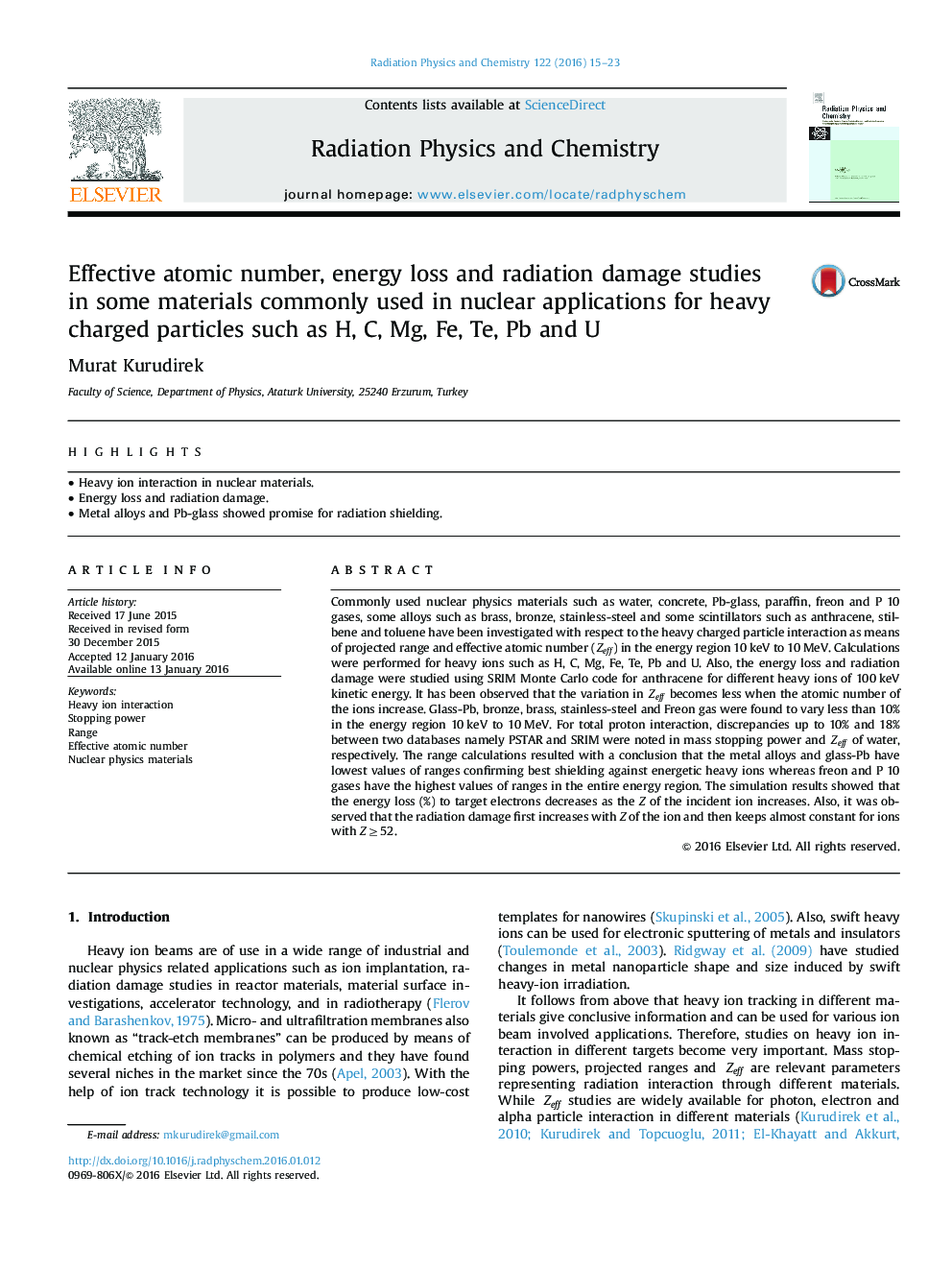| کد مقاله | کد نشریه | سال انتشار | مقاله انگلیسی | نسخه تمام متن |
|---|---|---|---|---|
| 1885904 | 1533502 | 2016 | 9 صفحه PDF | دانلود رایگان |
عنوان انگلیسی مقاله ISI
Effective atomic number, energy loss and radiation damage studies in some materials commonly used in nuclear applications for heavy charged particles such as H, C, Mg, Fe, Te, Pb and U
دانلود مقاله + سفارش ترجمه
دانلود مقاله ISI انگلیسی
رایگان برای ایرانیان
موضوعات مرتبط
مهندسی و علوم پایه
فیزیک و نجوم
تشعشع
پیش نمایش صفحه اول مقاله

چکیده انگلیسی
Commonly used nuclear physics materials such as water, concrete, Pb-glass, paraffin, freon and P 10 gases, some alloys such as brass, bronze, stainless-steel and some scintillators such as anthracene, stilbene and toluene have been investigated with respect to the heavy charged particle interaction as means of projected range and effective atomic number (Zeff) in the energy region 10 keV to 10 MeV. Calculations were performed for heavy ions such as H, C, Mg, Fe, Te, Pb and U. Also, the energy loss and radiation damage were studied using SRIM Monte Carlo code for anthracene for different heavy ions of 100 keV kinetic energy. It has been observed that the variation in Zeff becomes less when the atomic number of the ions increase. Glass-Pb, bronze, brass, stainless-steel and Freon gas were found to vary less than 10% in the energy region 10 keV to 10 MeV. For total proton interaction, discrepancies up to 10% and 18% between two databases namely PSTAR and SRIM were noted in mass stopping power and Zeff of water, respectively. The range calculations resulted with a conclusion that the metal alloys and glass-Pb have lowest values of ranges confirming best shielding against energetic heavy ions whereas freon and P 10 gases have the highest values of ranges in the entire energy region. The simulation results showed that the energy loss (%) to target electrons decreases as the Z of the incident ion increases. Also, it was observed that the radiation damage first increases with Z of the ion and then keeps almost constant for ions with Zâ¥52.
ناشر
Database: Elsevier - ScienceDirect (ساینس دایرکت)
Journal: Radiation Physics and Chemistry - Volume 122, May 2016, Pages 15-23
Journal: Radiation Physics and Chemistry - Volume 122, May 2016, Pages 15-23
نویسندگان
Murat Kurudirek,